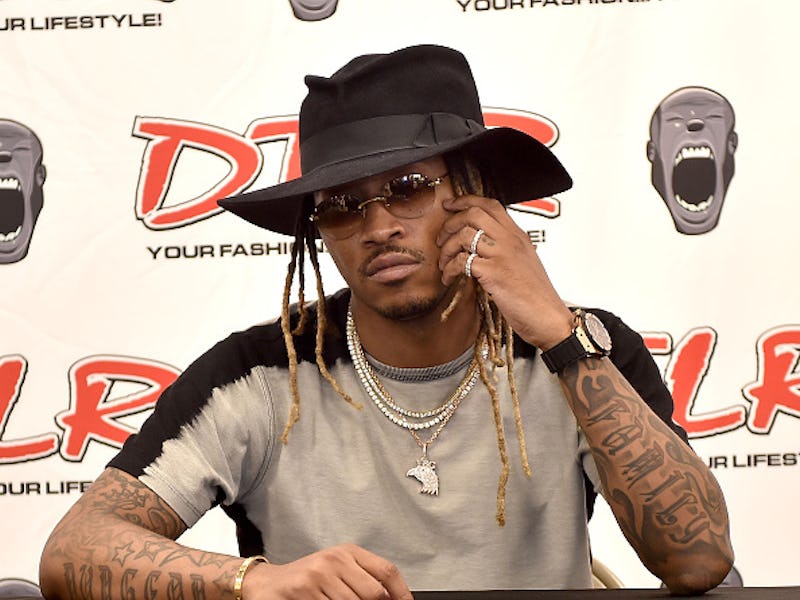Future's 'Dirty Sprite 2', 'Monster' and '56 Nights' Music Videos Are Hypnotic
His life is a movie.

On his new album Dirty Sprite 2, Future eschews the pop stardom for which he seemed destined. He scored a hit with Pluto’s “Turn on the Lights” and was featured on tracks with Miley Cyrus and Justin Bieber, but then he and Ciara got divorced and he ditched the gooey stuff. Now, he’s back to making street hits about drinking way too much codeine.
Future’s rapping is so effective because he does not hide his vulnerabilities. In fact, he may not even see them as vulnerabilities. Behind the mic, he’s an open book who spits with vivid detail.
Future brings the same sensibility to his music videos. On the surface, his videos seem blasé and trite; he’s often just standing around with some friends and partying. Actually, Future is subverting the tropes of typical rap videos (especially those produced by major labels). His videos lack excess. Largely, he doesn’t film in front of flashy settings (sans his Epic Records-backed Vevo clips). He doesn’t use women as props either, which is the unfortunate norm in hip-hop videos. Future just shows himself as he is, half-assedly rapping along to his own tracks in his beautifully bizarre outfits.
Future’s videos are reminiscent of those by DGainz, the Chicago director behind some of the drill scene’s most famous clips, namely Chief Keef’s “I Don’t Like” and “Love Sosa” videos. DGainz simply shot the Chicago teens in their homes (at first because Keef was under house arrest). Moving the camera slowly and subtly, and cutting scene-to-scene but never too rapidly or dramatically, his cinematic technique was evocative of the songs’ own sort of fast-paced sluggishness.
Future’s videos employ the same sort of stylized, bare-bones imagery as DGainz’s. Especially when watched in bulk, his videos have a mesmeric quality to them, as well. They are at once accessible and completely distant, reflective of his music.